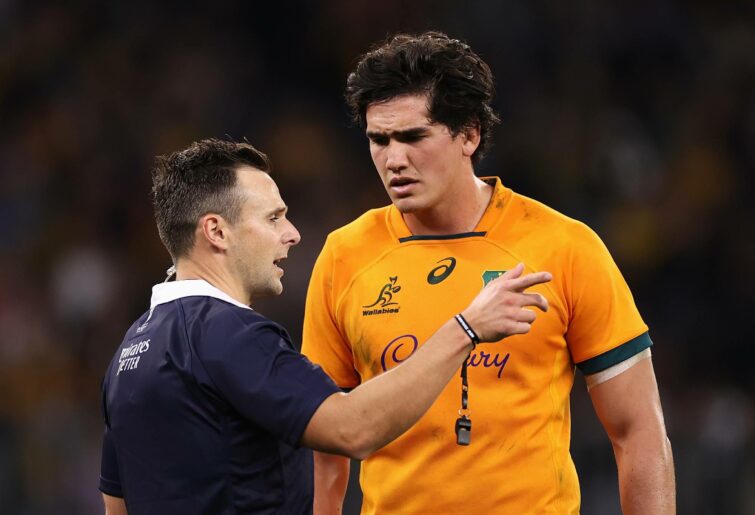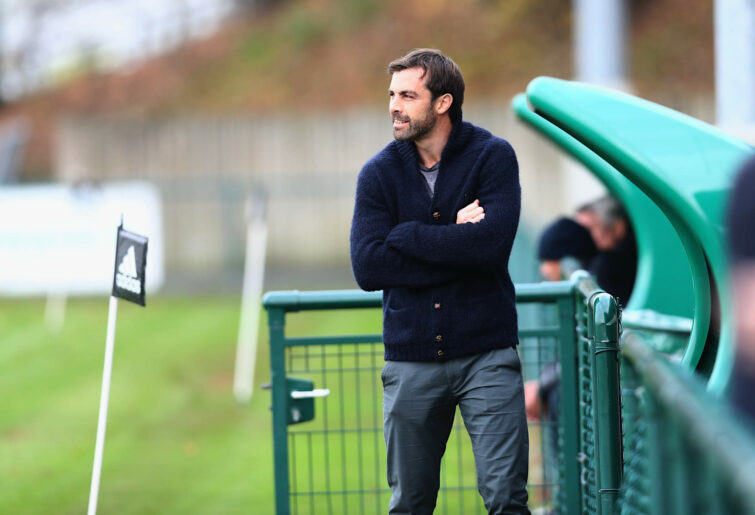It was no surprise to find Conrad Smith, on the morning of the recent Bledisloe Cup match in Melbourne, in the company of the man with whom he formed what is widely regarded as the best centre combination in the history of rugby, Ma’a Nonu.
Along with ex-All Blacks captain Tana Umaga, Nonu had wowed a sell-out audience the night before at Bells Hotel in South Melbourne, with a personable and starkly honest account of all things rugby and life; taking after-dinner rugby speaking to a new level.
That was something I was keen to prise out of Smith; the fact that not only was he an All Black, he left a legacy as a great All Black, and was that something he sought to mirror in his current role as head of welfare for the Dublin-based International Rugby Players? Not just to do a job, but to leave a lasting impression on the game?
“I wouldn’t say that I’m on a mission, and it’s definitely not about me,” he explains. “It’s more that I’ve always had an interest in helping other players; as a lawyer I’d often get asked for advice by teammates, and so this always felt like it was a natural progression.”
What’s immediately apparent is Smith’s passion for the role, and for rugby. “I’m certainly motivated by a few different things; to represent and be an advocate for players on welfare matters, and also to help address some of the challenges that rugby is currently facing around how the game is played.”
It’s a broad brush, brought about by necessity, but also Smith’s acute understanding of how the rugby world works, and what is required to effect change.
We chat about World Rugby and the misapprehension that many people are under when it comes to the world’s governing body.
“People assume World Rugby is like a normal business, where people have autonomy to make decisions and there is instant implementation and accountability. But it’s not like that at all; even though the governance model has changed over time, it is still a body representative of the member nations, it has a certain way of operating and voting processes, and changes can take a long time to come into effect”, he explains.
Ironically, despite clamour from all around the world for law changes to help make rugby more appealing, one of the reasons for such a cautious, conservative approach is a determination by the game’s administrators not to compromise player safety.

Darcy Swain of the Wallabies receives a red card (Photo by Cameron Spencer/Getty Images)
New laws and law variations, and sanctions have been introduced in recent years, many of them targeted at making the game safer; think increased clarity around playing a man in the air, and the scrum ‘brake foot’ requirement, for example.
Yet that has sometimes seemed at odds with the way rugby has dealt with the issue of head injury and concussion. While there have been changes made with respect to lowering tackle heights, these haven’t always been smoothly executed or well accepted.
Along with other sports administrations World Rugby has adopted a pitch-side assessment process for head injuries, the SCAT5 test, based on the recommendations of the Concussion in Sport Group (CISG), via a consensus statement released in 2017.
That statement was due to have been updated last year, but was subject to COVID-related delays. Already under a cloud following the revelation in 2020 that 32 of its 36 panelists were recipients of funding from sports reliant on its findings, the group came under heavy fire after allegations of plagiarism were levelled at its lead author and chair, Dr Paul McCrory, who consequently resigned his position in March this year.
Chief executive of the Concussion Legacy Foundation, Dr Chris Nowinski, accused McCrory and the CISG of misinterpreting and misrepresenting research conducted at Boston University and, over a period of years, downplaying the connection between head impacts and CTE.
As a result, Nowinski believes that a lot of people have been convinced that the dangers of CTE have been overblown.
World Rugby is yet to communicate how it intends to move forward from having its head injury protocols shaped by a group which continues to be subject to question marks over its probity and validity, but Smith remains confident that more can and will be done to advance player safety around brain injury.
“The scientific evidence increasingly points to the link between head contact in rugby and issues in later life for a number of players.” (Note that a concussion advisor to World Rugby, Dr Bob Kantu, recently co-authored a study acknowledging the causal link between sub-concussions and CTE).
“We still need to be careful about understanding what that means exactly, in terms of the decisions made around how we play the game, but there’s no doubt that concussion is being taken a lot more seriously, than say when I was playing.”

(Photo by Phil Walter/Getty Images)
In this respect, Smith expresses frustrations about how the media and public narrative plays out, stating: “People are very quick to criticise the game and highlight concerns about entertainment value and so on, but I’d like to see more balance and understanding about what is trying to be achieved.
“Yes, there are always issues when new measures are taken, and challenges around consistency with how referees apply sanctions for high contact, but at the end of the day the people in charge of rugby have to do the right thing to protect players.”
We talk about Nowinski’s recent visit to launch a branch of the Concussion Legacy Foundation in Australia, in particular the concern around links between CTE and the cumulative number of head injuries, including small sub-concussive hits, over the length of a player’s career.
“That’s something that’s a real challenge for rugby,” he says. “Personally, I’d like to see players play and train far less, and for there to be designated breaks from the game where each player was to have say a mandatory three-month rest period, every year.”
“The challenge around that however, is that club owners, national unions and now potentially private equity investors, all want their players playing as much as possible, to maximise revenue. That’s understandable, and while nobody wants to put players at risk, it’s a conflict that’s very difficult to overcome.”
So, what then, of the player’s representatives? In any ‘normal’ workplace or factory where workers were being hit in the head and shown to be suffering serious long-term health impacts as a result, it would be unthinkable that a union would allow that situation to continue without holding the management to account.
Why is rugby, and sport in general, different?
“It’s a good question,” says Smith, “and one that’s very complex to answer. On one hand, while players are increasingly conscious of their safety, and broadly accept the measures that the game is taking, they are also only in the (professional) game for a short window, and so, understandably, they seek to maximise their earnings potential in that time.”
“The other point to make is that, to use New Zealand as an example, we have enjoyed a long period where relations between New Zealand Rugby and the players have been very positive, and many changes for the better have resulted.
“That’s down the work of Rob Nichol, leading the players association, and what I learned from that is how much easier it is to effect positive change when the approach is collegial and constructive, as opposed to adversarial.”
We cast an eye towards the UK, where there are powerful advocacy groups like Progressive Rugby, and a highly publicised court action against World Rugby featuring any well-known ex-players; things that are contributing towards a push for more decisive and faster action.
Smith sees these developments as a necessary part of the process, to have the issue play out and evolve in public, so as to help raise awareness around the issue, and better inform everyone involved in the game.
“One thing I will say, is that the UK is a year or more ahead of New Zealand and Australia with respect to understanding all of the issues around head injury,” he states. “I’m talking about the whole game; players, coaches, fans and broadcasters.”
Smith isn’t exactly sure why, other than pointing to differences in culture, inside and outside of rugby, and also how media in the UK has played more of a role in educating and giving the matter prominence.
That’s a topic that hits a nerve, the fact that broadcasters frequently utilise ‘expert’ commentators who are anything but, and whose commentary is often ill-informed and conflicts with the messaging around head injury and player safety.
“One of the major issues the game has is around communication, and getting a consistent message out there. We’ve had situations recently where we’ve tried to bring broadcasters to the table, to align them on things that we’re trying to achieve, to help provide them with a more factual base, but unfortunately, few of them seem genuinely interested.”
What is most impressive about Smith is how the combination of his intelligence, common sense, personability and love for the game roll into a single package that suggests that for as long as rugby has people like him in positions of influence, the sport will be in good hands.
Modest to a fault, Smith is reluctant to be cast as some kind of crusader or messiah. But he has not taken on this role just to tick boxes, and it is clear that he is prepared to play a prominent role in leading rugby forward on the issue of head injuries.
It feels like rugby has reached a crossroads, and there is increasing conflict between those people who know what they’d like rugby to be, and those who know – when it comes to safety around head injury – what rugby needs to be.
Rugby is fortunate that there are smart people like Conrad Smith, who understand that there is a middle ground, where the essence and spirit of the game can be retained, whilst ensuring the safety of those who play it.






























































































